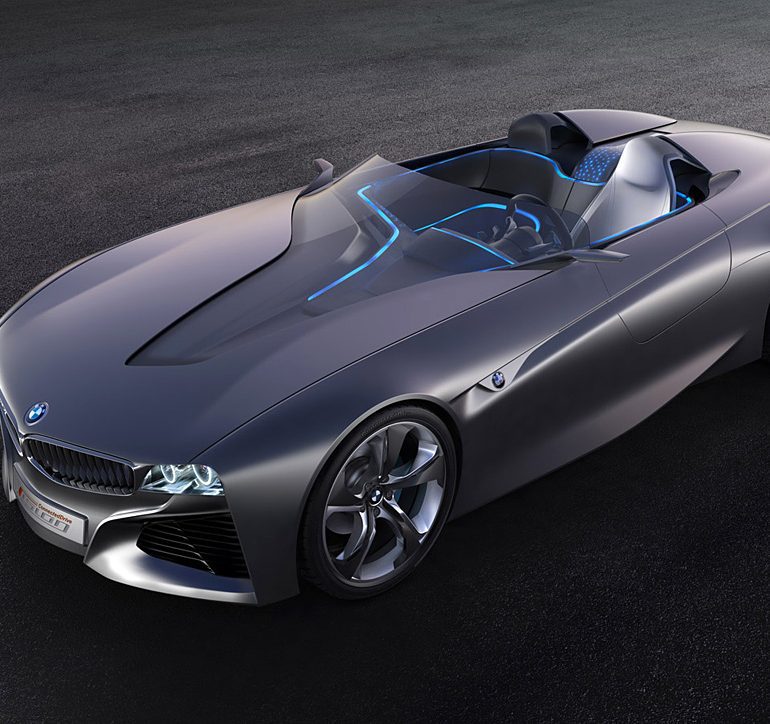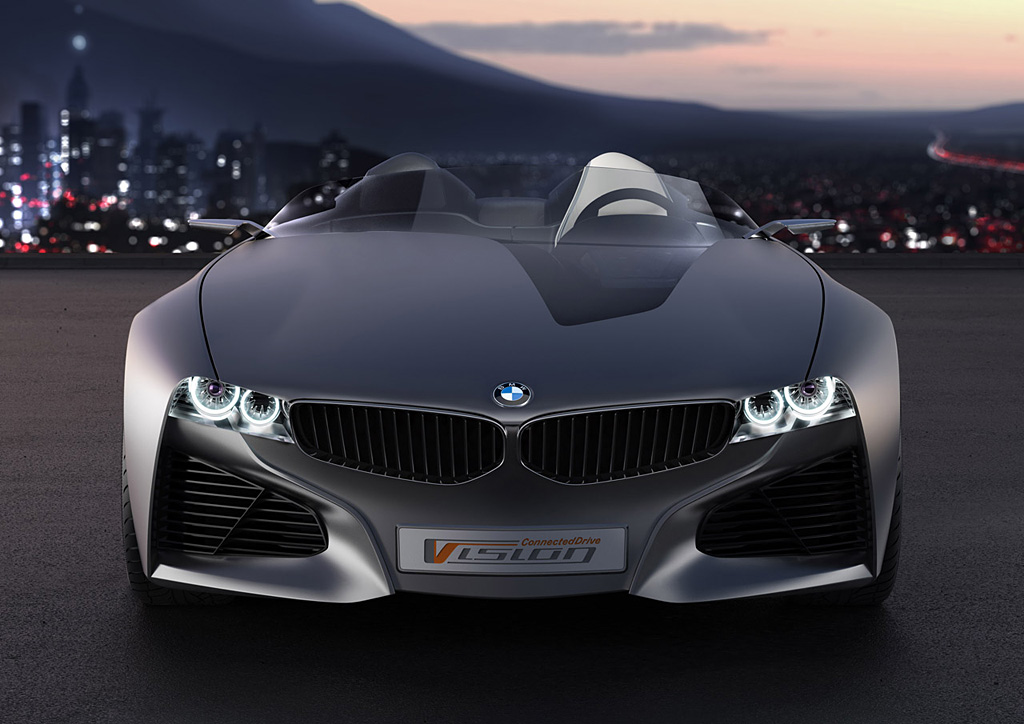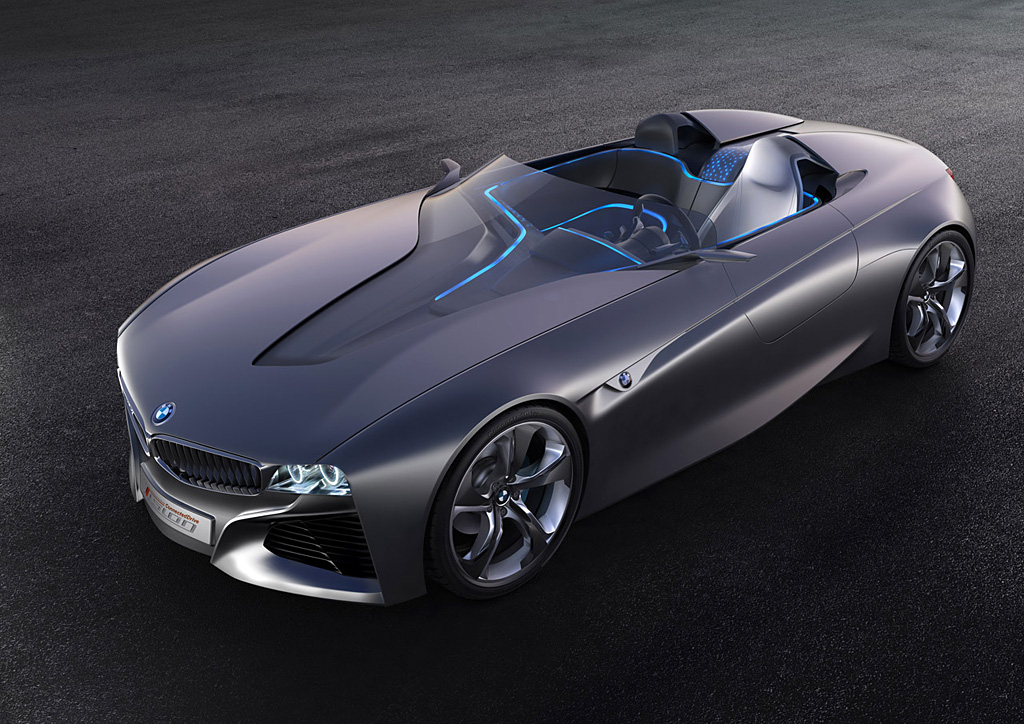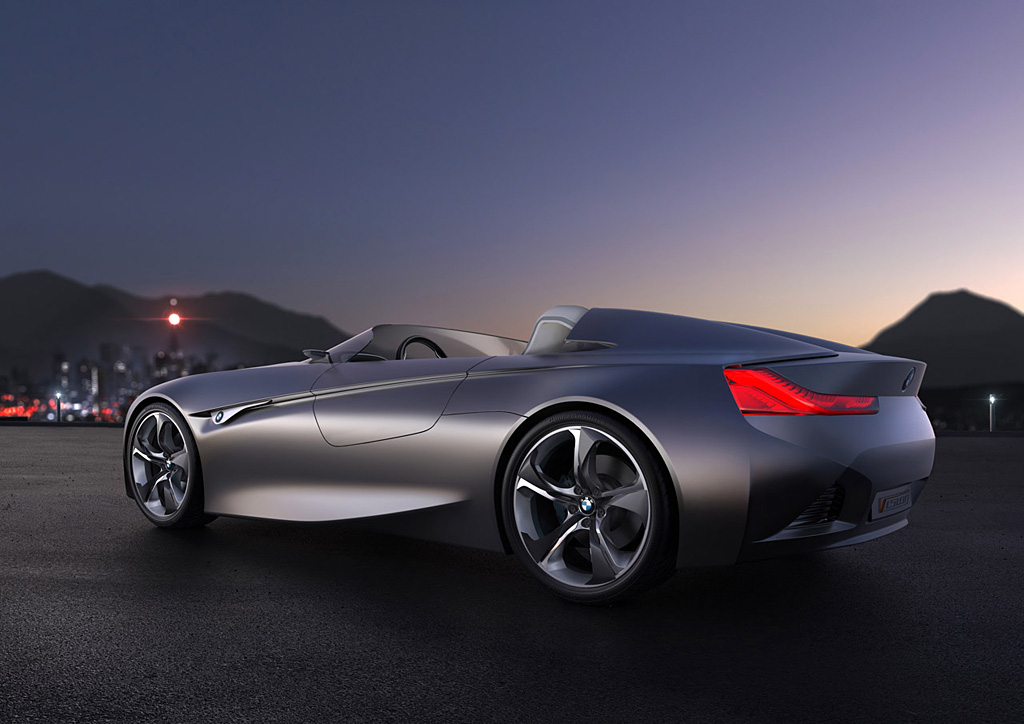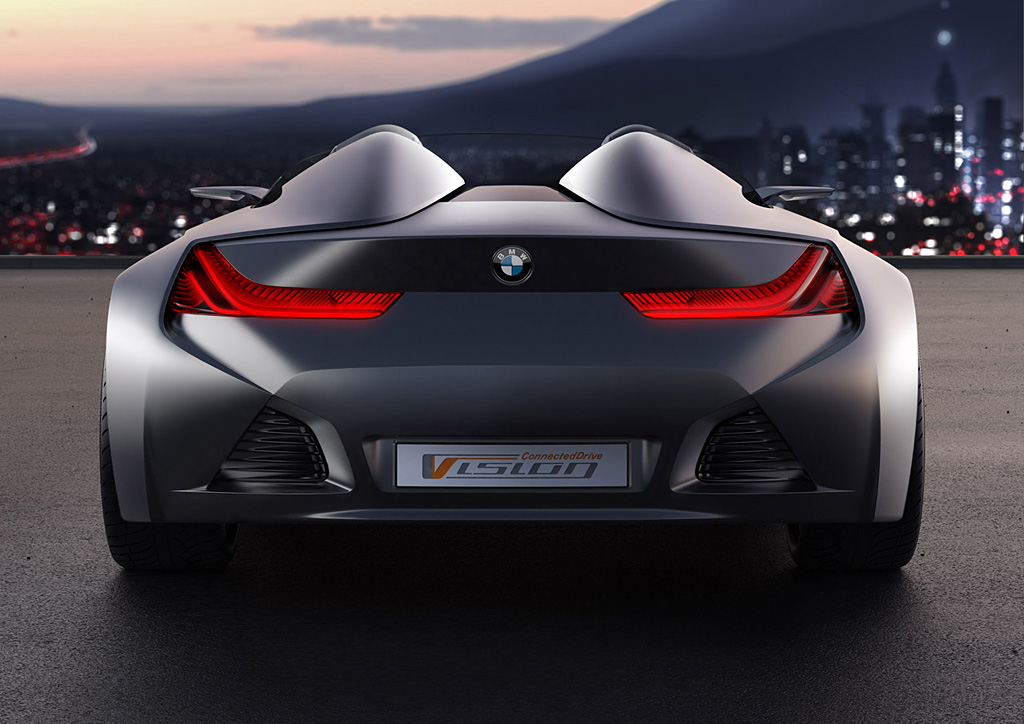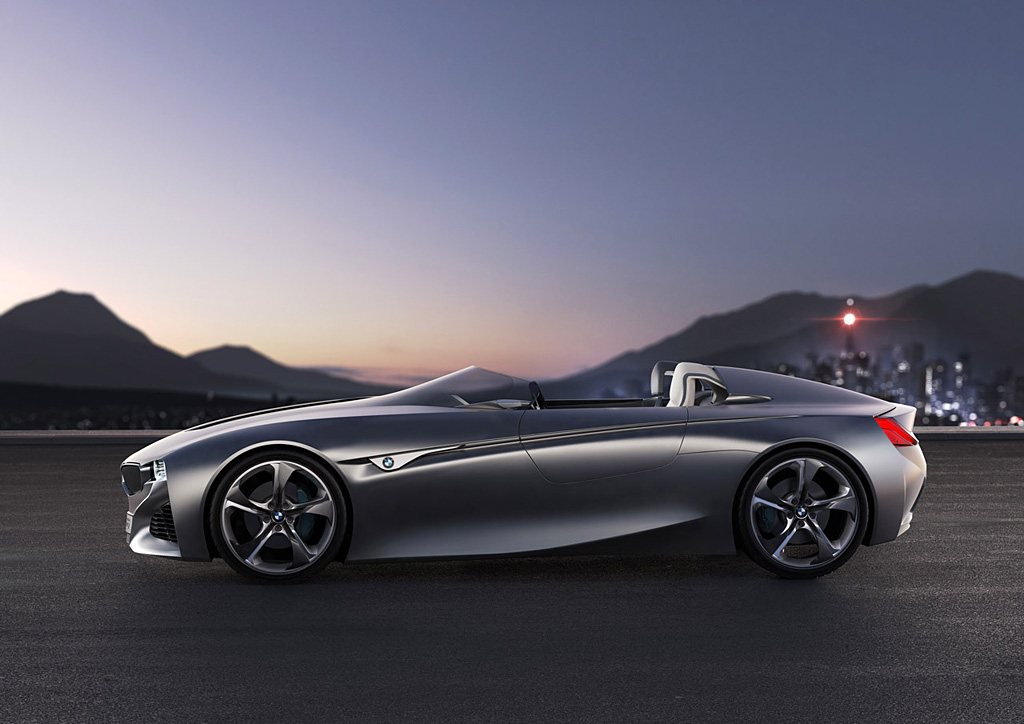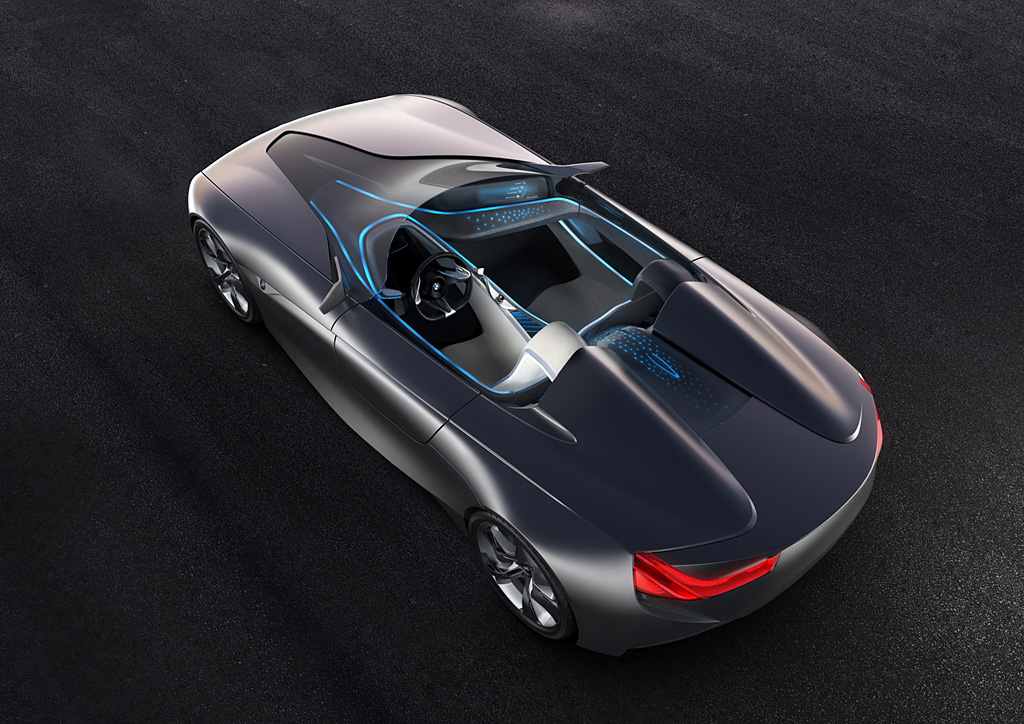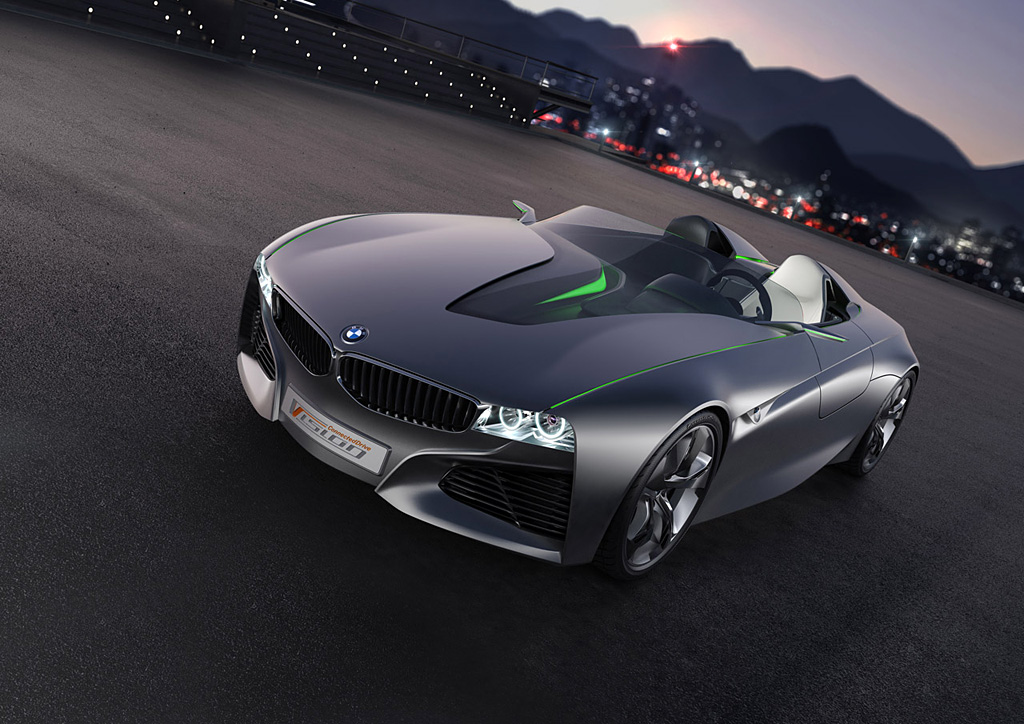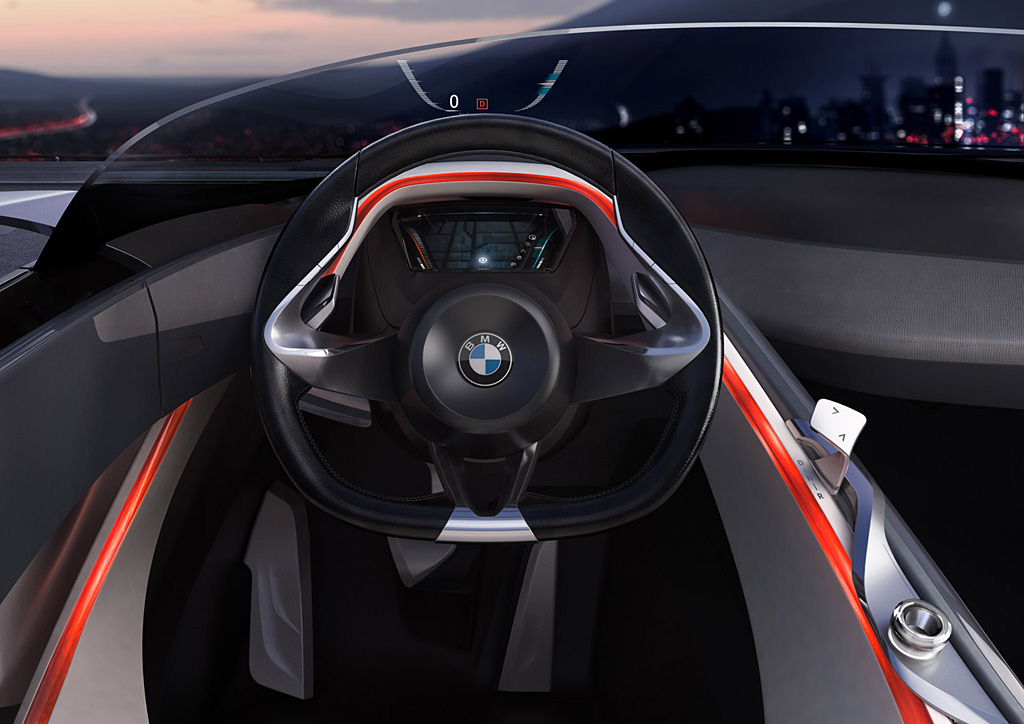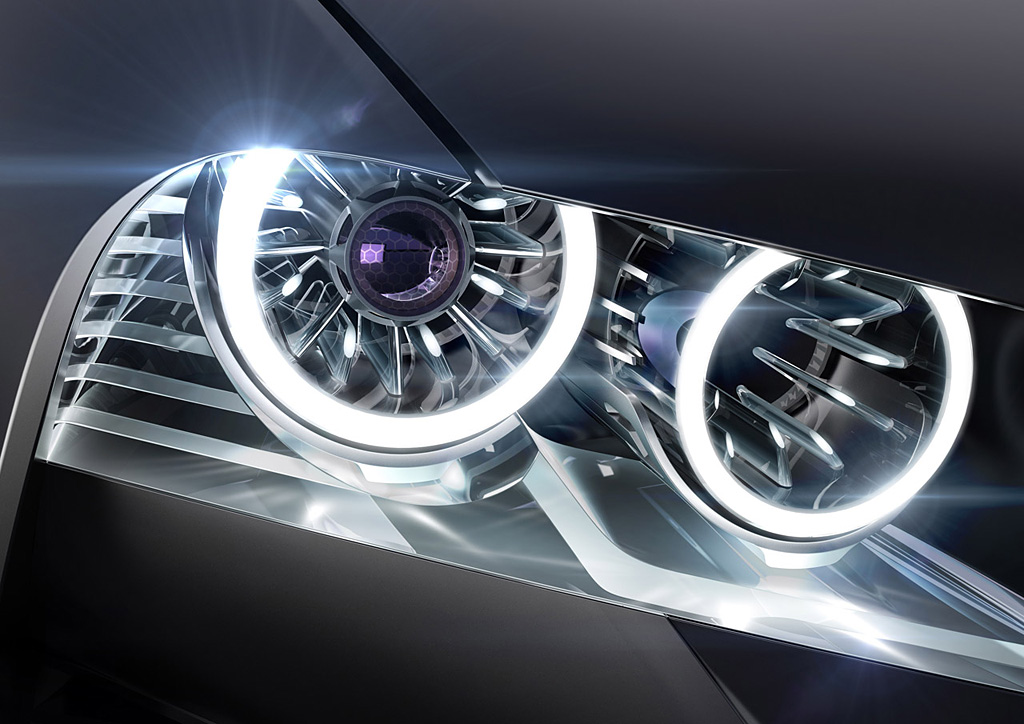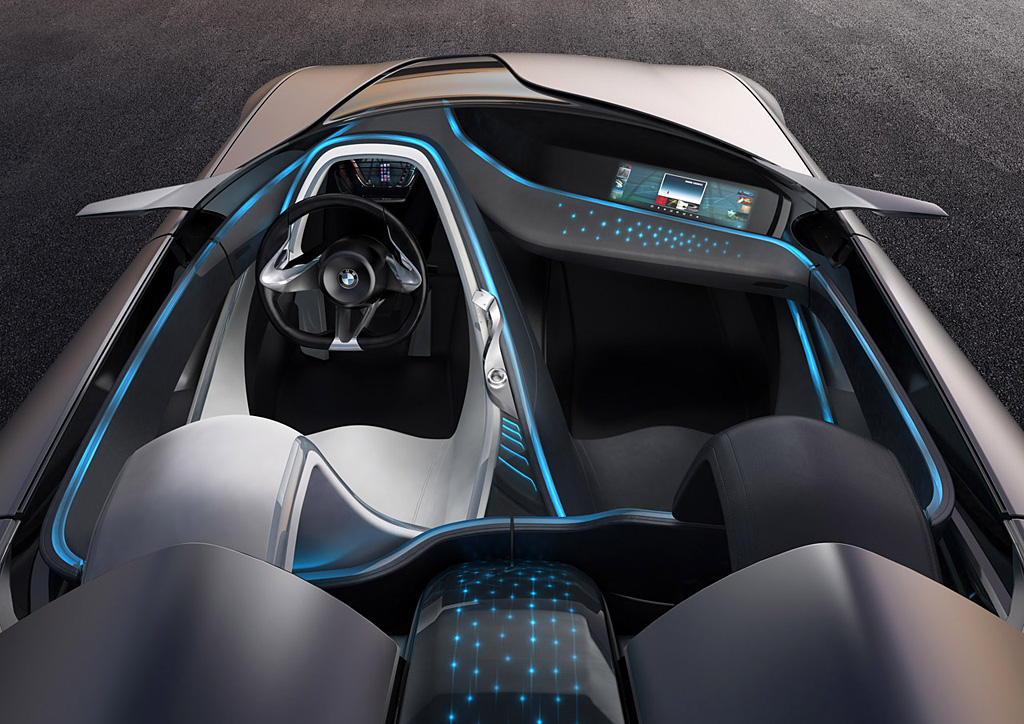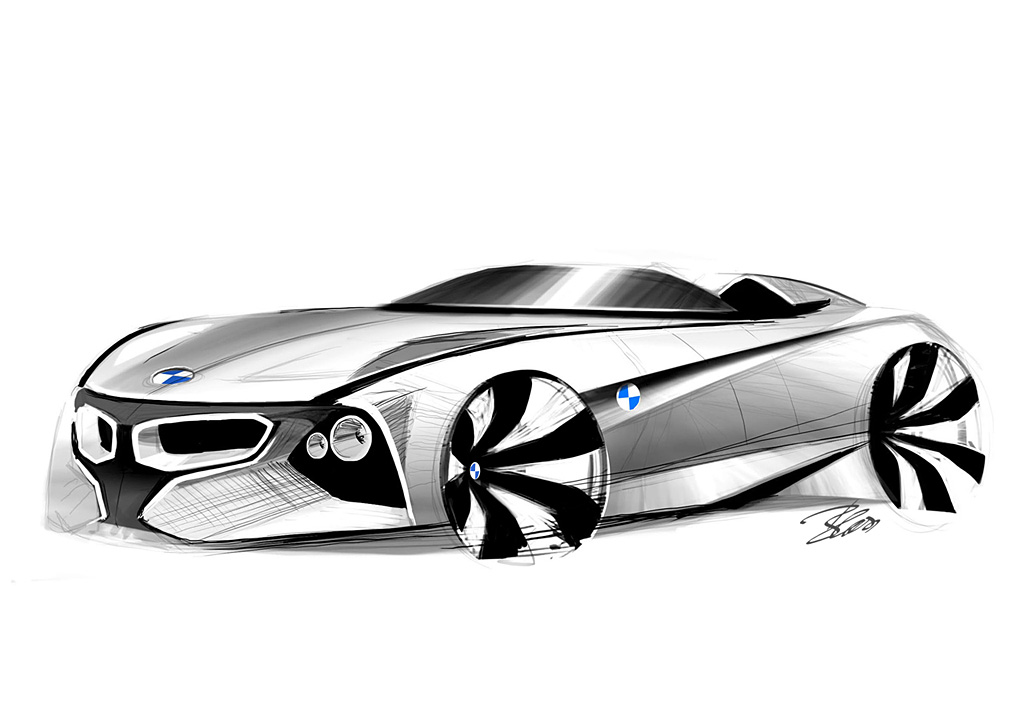2011 BMW Vision ConnectedDrive
To promote their new ConnectedDrive network BMW will release the Vision ConnectedDrive design concept at the upcoming Geneva Motor Show. It’s a radical two-seat roadster that hints at what the next BMW styling language might lean towards.
Press Release
At the beginning of the 1970s BMW began work on networking the vehicle with the outside world and networking the vehicle’s own systems with each other in order to realise innovative information, communication and assistance systems. Since those early days, enormous progress in networking has been made – progress that was primarily driven forward by the creative, innovative strength of the BMW Development Engineers. Many of these innovations such as the Park Distance Control or the Integrated Navigation System have set standards for the entire automotive industry.
Today, BMW ConnectedDrive is the epitome of intelligent networking of driver, vehicle and the environment. In the meantime, the BMW ConnectedDrive product portfolio includes numerous innovative features which considerably raise the level of comfort during the journey, allow Infotainment to be experienced in a whole new dimension and which significantly increase the level of safety for people both inside BMW automobiles and for those in the vicinity.
The BMW Vision ConnectedDrive concept study extrapolates the principle of intelligent networking of driver, vehicle and the outside world into the future. The vehicle is transformed perfectly naturally into a fully integrated part of the networked world and sets new standards in future comfort, infotainment and safety features. The BMW Vision ConnectedDrive shows most impressively the potential that BMW ConnectedDrive technologies hold for the future. The
concept study should be viewed as a sculpture, as a vision, giving these innovative technologies and forward-looking ideas physical form, portraying them and breathing life into them.
Design expresses networking
The overall theme of the emphatic design of the BMW Vision ConnectedDrive vehicle is “connect and network” and is divided into the three areas of safety, infotainment and comfort. The fundamental concept of BMW ConnectedDrive – the intelligent networking of driver, vehicle and the outside world – is expressed on four levels: the display and operating concept, an unparalleled light installation, the design itself and the integration of the whole concept into the multimedia setting of the stand at the motor show.
From the inside to the outside
The human being stands firmly in the focus of BMW Vision ConnectedDrive, more so than with any other vehicle. The vehicle and its functions have been designed to cater to the needs of the driver and the passenger – they are the starting point and the end of each and every interaction. This orientation towards the passengers is most obvious in the interior. Clear, enclosing symbolism divides the interior into three levels that could also be described as layers or shells. Each level expresses one of the three themes of BMW ConnectedDrive – comfort, Infotainment and safety – and integrates the appropriate functionality, operating panels and displays. By creating the three layers in the BMW Vision ConnectedDrive’s interior, the layering principle, something also well known from BMW Vision EfficientDynamics, has been consistently further developed. The term “layering” describes a new approach to the BMW Group’s concept of design and its design language, redefining the way surfaces, interfaces and materials have been treated in the past. By working with different layers, organic radii and surfaces, the layering concept breaks up large volumes like the instrument panel, thus creating free space for features such as ventilation, operating elements or trays. The result is a modern, organically aesthetic, light and emotional design.
Fibre optics in various colours define the three levels and formally underscore the differentiation between each distinct area. All three areas have a dedicated, individual light installation, each discerned by colour, but also by rhythm, motion and texture. When a feature is activated, the path taken by the information through the vehicle is illustrated by means of transparent surfaces and fibre optic lighting, quite literally highlighting the interaction between the environment, the vehicle and the driver in the context of BMW ConnectedDrive.
Safety
The central area of safety symbolises the interaction between the driver and the environment with active safety measures such as driver assistance systems. These are features that enable the vehicle to pass information relevant to safety on to the driver. Very clearly outlined, the first level encompasses the driver in the interior of the vehicle like a ribbon, thus defining his area of responsibility. To further aid clarification, red/orange fibre optic strands run from the sensors at the front of the vehicle, are routed very closely around the driver’s zone and continue to the rear lights. All of the lines of the first shell come together in the cockpit that is extended into the “cone of vision”, a transparent cone-shaped surface open to the driver on the bonnet. The cone of vision symbolises the driver’s focus on the road ahead and on the concentration of information that is flowing in the opposite direction, towards him.
The safety layer bundles all of the information and operating elements relevant to driving the vehicle as is characteristic and typical of BMW’s driver orientation. This is where the two instruments that provide the driver with access to the entire spectrum of relevant information are located. The windscreen is an integral part of the Head-Up Display and provides important current information about the journey – including speed, navigation instructions and fuel consumption – to the driver without him ever having to take his eyes off the road. In addition, if required, the freely programmable instrument cluster located in the scoop will provide extra in-depth information to supplement the Head-Up Display.
The orange fibre optic strands running below and alongside the cone of vision represent the safety-specific information flow in the direction of the driver and are the link between the sensors in the front and rear of the vehicle and the driver. Numerous sensors monitor the environment in front, behind and on both sides of the vehicle. These are capable of recognising people and other vehicles and pass relevant information to the driver. The entire front sensing system is integrated into the headlights, the “eyes” of the vehicle, scanning the space ahead. The same applies to the rear. The sensing system for monitoring the space behind the vehicle, including cameras, is integrated into the taillights.
Infotainment
The second level, the infotainment level, encompasses the safety level and extends the sphere of action to the passenger. With an embracing gesture encompassing both seats, the Infotainment zone defines a communication level between the driver and the passenger and also spatially promotes active social exchange and the encounter between the two. In the Infotainment layer too, fibre optic strands outline the space. The receiving antenna with a Perspex cover is located between the two seats is the source of this blue-themed light installation. From the point of origin the information symbolised here by light flows to the information displays in the driver’s and passenger’s individual information zones via a yoke enclosing both seats.
The Passenger Information Display is mounted in the instrument panel in front of the passenger and is the gateway to the passenger’s world of entertainment. When it is inactive, it is invisibly integrated into the instrument panel. However touching the area below, which is covered with a transparent, conductive fabric, will bring it to life. Using the touch-sensitive area, the Infotainment features on the display can be manipulated and controlled at just the touch of a finger. Light sources in the fabric glow when touched and provide the passengers with feedback on their actions, i.e. the vehicle interacts with the passenger. The antenna, which can be seen under a Perspex cover in the middle of the vehicle behind the headrests, is the link between the BMW Vision ConnectedDrive and the world of Infotainment. This antenna does a very similar job to the well-established fin-shaped antennas mounted on production cars.
Comfort
The third level comprises the vehicle itself and focuses on the communications level of the two passengers and the outside world, something central to BMW ConnectedDrive. In the BMW Vision ConnectedDrive, the connection between the vehicle and the environment is expressed primarily in the peripheral zone of the automobile. Instead of two wing mirrors, two fin-shaped antennas provide the link to the world of data. No matter whether navigation and traffic information or mobile Internet, these antennas either pick up information relevant to the comfort of the passengers and channel it to the interior of the vehicle or they transmit information to the outside world.
Since the vehicle itself acts as the link to the outside world, the green fibre optic strands depict the comfort layer around the entire vehicle. The light flows via the antennas into and out of the vehicle; the outside areas of the vehicle are particularly emphasised.
The division of the three levels is also reflected in the conception of the colours and materials. Seat shells, clearly separated from one another, in premium grey leather portray the first level and the individuality of the passengers while a ribbon of anthracite grey nubuck leather unites the two areas over the door and the instrument panel, depicting the second level. Interactive Silver, the colour of the exclusive exterior paintwork, is a light, smoky grey with a silk matt finish, stressing the technical character of the vehicle and accentuating the language of form. The consciously understated, achromatic colours accentuate the orange red, blue and green light installations, effectively highlighting the three levels.
The exterior design
As a two-seater roadster charged with emotion, the BMW Vision ConnectedDrive is a particularly dynamic, purist interpretation of the characteristic BMW language of form: the long bonnet, the long wheelbase and the passenger compartment set well back seem to accelerate the vehicle even at a standstill. The bonnet and the windscreen flow into one another to form a homogenous surface and endow the BMW Vision ConnectedDrive with an extraordinarily flat, sporting silhouette.
Within these tight roadster proportions, distinctive, concise lines flow over the taut surfaces of the vehicle’s bodywork. The resulting play of light and shadow imparts a fascinating and emotional character to this concept study. The expressive 20-inch wheels, fashioned in three dimensions, underscore the sporting, dynamic character of the vehicle.
The front of the BMW Vision ConnectedDrive manifests the typical characteristics of BMW design, with a strong horizontal orientation, stressing width. The kidney grilles and dual, round headlights have been designed in a particularly flat fashion and lend the front a dynamic, modern expression. Below these, two large air vents emphasise the width of the vehicle, giving it a decidedly sporty look.
The door concept is a particularly distinctive feature of the exterior of the BMW Vision ConnectedDrive. Developed with the innovative, electro-mechanical retracting door mechanism of the BMW Z1 in mind, which can be legally driven with its doors open, the idea has been extended and now finds application in the BMW Vision ConnectedDrive. Two sliding door elements – one inside, one outside – disappear into the bodywork of the vehicle when the door is opened, enabling entry. While the outer shell slides forward, the inner shell disappears into the rear area of the vehicle with a movement in the opposite direction. The BMW Vision ConnectedDrive can also be driven with the outer doors open, a central aspect of the vehicle.
The expressive, modern surface work evident at the front and on the sides of the vehicle is continued at the rear. Two large air outlets make the formal connection to the front and underline the sportiness of the vehicle at the rear. The rear lights, placed at the extreme outside of the back of the vehicle, feature the distinct BMW L-design and have a strong sculptural character. Just as at the front of the vehicle, the rear sensor technology is also integrated into the lights. The concept of layering used in the interior, in which a component takes on a number of tasks, is thus carried over to the exterior. The BMW Vision ConnectedDrive concept car was consciously designed as a roadster, as the vehicle is able to show its overall creative concept best by way of the open roadster design. Seen from above, the interior design, light concept and exterior design fuse into a very clear, unmistakable statement: BMW ConnectedDrive.
Changing perspectives
In order to do full justice to the BMW Vision ConnectedDrive at the 2011 Geneva Motor Show with all of its advances and innovations, the presentation not only includes the concept car itself thus but also a display of the vehicle on a large high-resolution LED screen. The motor show visitors thus experience the BMW Vision ConnectedDrive from two perspectives. At first, the vehicle drives through three virtual scenes, which highlight the features of the individual levels of safety, Infotainment and comfort. Any additional information made available to the passengers, via the Head-Up Display for instance, is embedded into this virtual presentation.
In the second scene, the perspective changes to a bird’s eye view. A part of the LED screen slides away, revealing a second actual physical model of the BMW Vision ConnectedDrive, integrated into the media wall. This “avatar technique”, a real actor in a virtual environment, makes the bird’s eye view possible and allows the visitors to better experience the events in and around the vehicle portrayed in the scenes specific to the three levels. The individual levels are thus presented to their best advantage by the light installations and the network that exists between the vehicle and its environment, unseen in practice, is rendered visible. The transparent surfaces, fibre optic cables and antennas demonstrate how the different information flows move, which paths they follow when specific events take place and how the vehicle is linked to the environment, the driver and the passenger.
2011 BMW Vision ConnectedDrive Gallery
See full 2011 BMW Vision ConnectedDrive Gallery here
In Detail
| type | Concept / Prototype Car |
| released at | 2011 Geneva Motor Show |


